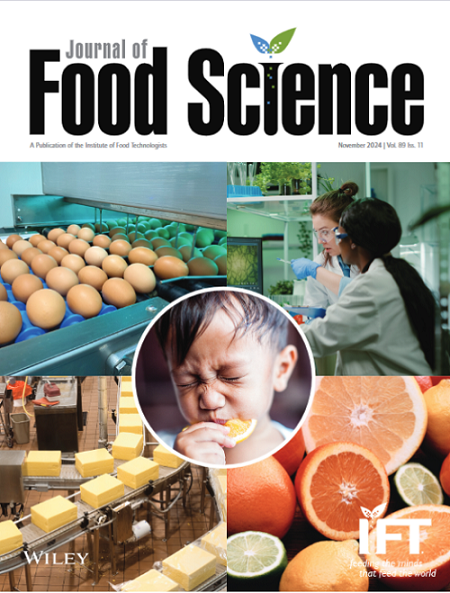Assessing plasma-activated water as an acidic and sanitizer solution in clean-in-place (CIP) and comparing efficacy with other traditional CIP chemicals
Abstract
Cleaning-in-place (CIP) is the most commonly used cleaning and sanitation procedure for removing fouling deposits. Traditional CIP includes a series of chemical cleaning cycles, including alkaline, acid, and sanitizer. However, these chemicals are hazardous to the environment and employees. Plasma-activated water (PAW), generated by exposing water to plasma (the fourth state of matter), was selected as a CIP cleaning solution due to its acidic pH and antimicrobial properties. The aim of this study was to evaluate the efficacy of PAW as a CIP cleaning solution for dairy (whey)- and plant (pea)-based fouling removal. PAW was used in place of acid in traditional CIP for fouling removal in a continuous system and to test alkaline neutralizing capacity. Later, individual CIP chemicals were used to evaluate their efficacy against mixed-species biofilms. All the treatments were performed in triplicate, and a significant difference was determined using a one-way analysis of variance (ANOVA) at p < 0.05. Traditional CIP with acid and CIP with PAW were able to reduce dairy-based protein fouling by 49% and 15%, respectively. However, CIP with acid and PAW removed 100% plant-based protein fouling deposits. Moreover, PAW was able to neutralize more alkaline residues compared to acid in the CIP cycle. The result also showed that PAW alone reduced biofilms on whey and pea protein deposits by 4.2 and 3.0 log CFU/coupon, while traditional CIP sanitizer achieved reduction by 1.8 and 3.2 log CFU/coupon, respectively. PAW, being an eco-friendly solution, can be a viable alternative to sanitizer in traditional CIP.
Practical Application
Plasma-activated water (PAW) could be a promising eco-friendly alternative solution to traditional cleaning-in-place (CIP) chemicals in the food industry. By effectively removing fouling deposits while also neutralizing alkaline residues, PAW shows promise for industrial applications in dairy- and plant-based food processing facilities. Its ability to remove biofilms from protein deposits suggests potential benefits for maintaining sanitation standards in food production environments, making PAW a viable option for improving cleaning practices while minimizing environmental impact and ensuring employee safety.

 求助内容:
求助内容: 应助结果提醒方式:
应助结果提醒方式:


